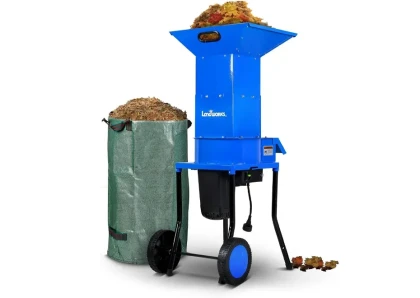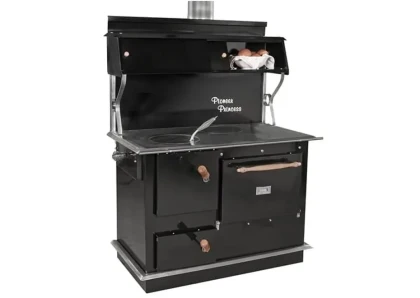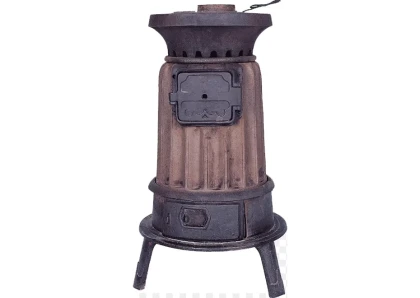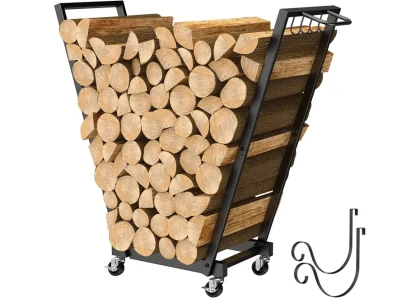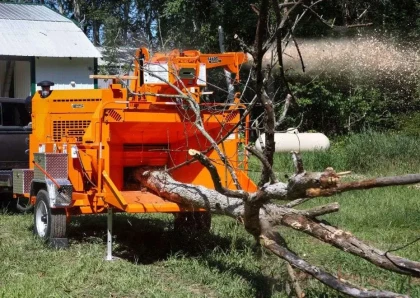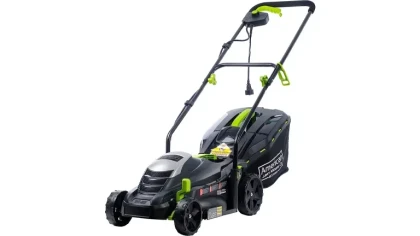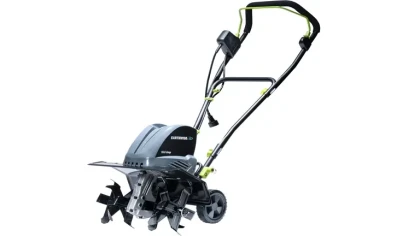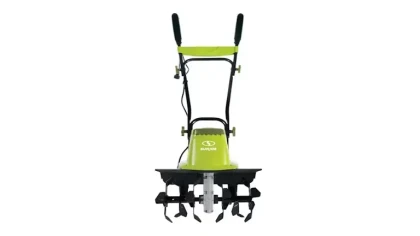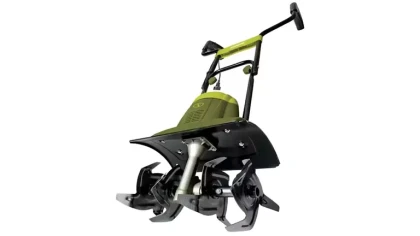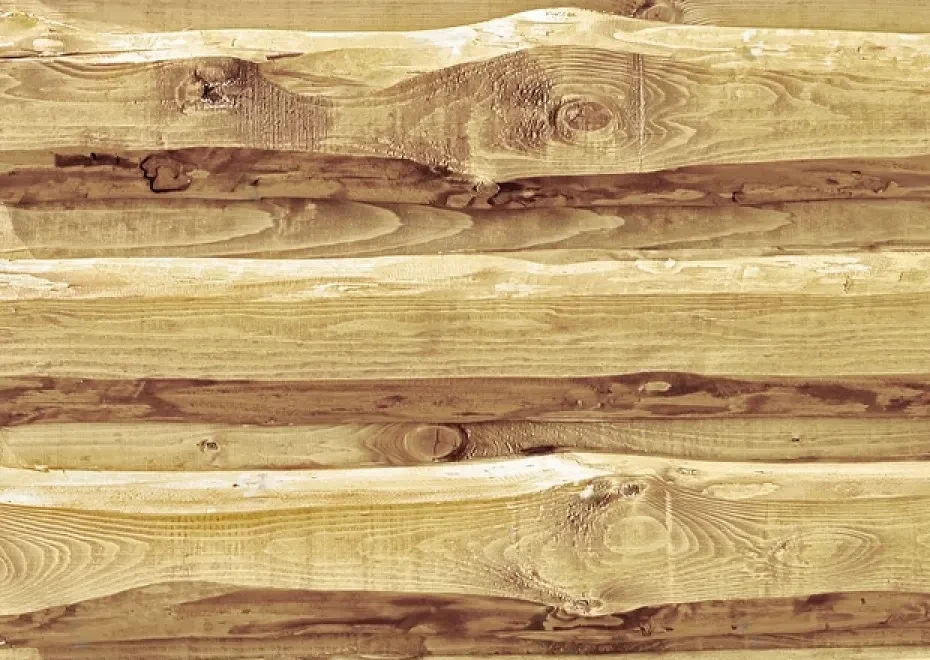
Live Edge Siding
Overview
Live Edge Siding is more than just a siding option; it's a way to incorporate the raw and untouched beauty of wood into the design of cabins, houses, sheds, and other structures. The appeal of Live Edge Siding lies in its ability to showcase the natural beauty of the wood, with its unique and irregular edges that preserve the tree's growth rings, knots, and contours. This distinctive feature brings an authentic and organic touch to any space, creating a warm and inviting atmosphere that connects with nature.
One of the key applications of Live Edge Siding is in cabins, where it adds a sense of rustic charm and complements the surrounding natural environment. The raw and organic appearance of the wood perfectly blends with the cabin aesthetic, creating a cozy retreat that feels harmonious with its surroundings. Live Edge Siding is also widely used in houses and sheds, providing a distinctive exterior that sets them apart from traditional siding options. The versatility of Live Edge Siding extends beyond exterior applications, as it can be utilized for accent walls and interior paneling, bringing the beauty of nature indoors.
Live edge siding is a type of siding that is made from the natural edges of a tree. This type of siding is becoming increasingly popular because it brings the natural beauty of wood into the home. Live edge siding can be made from a variety of woods, including cedar, Douglas fir, redwood, pine, oak, maple, poplar, and cyprus. The type of wood you choose will depend on your climate, budget, and personal preferences.
According to a 2022 survey by the National Association of Home Builders, 1.5 million US citizens or homeowners used live edge siding on their homes. This represents a 10% increase from the previous year. The survey also found that live edge siding is most popular in the western United States, with California, Oregon, and Washington accounting for 40% of all installations.
What are the different types of live edge siding?
There are two main types of live edge siding: horizontal and vertical. Horizontal siding is installed with the edges running horizontally, while vertical siding is installed with the edges running vertically.
Horizontal Live Edge Siding- Lap Siding: This style involves planks that overlap each other horizontally. This creates a tiered look that can add depth and texture to a building's exterior. Because the boards overlap, lap siding can provide excellent protection against rain and snow.
- Board and Batten: In this style, wide boards are installed horizontally with narrower battens covering the joints between boards. This creates a distinctive pattern that can give a rustic, handcrafted look to a building.
- Channel Siding: This involves thicker boards that are installed in a way that leaves a small gap or "channel" between each one. The result is a linear look with a slightly more modern edge than some other horizontal styles.
- Board-to-Board (or Board-on-Board): This type of siding is similar to board and batten, but with the boards installed vertically. It can create a strong, visually striking appearance that stands out from other styles.
- Tongue and Groove: In this style, the edges of the boards have a tongue on one side and a groove on the other, allowing them to fit together seamlessly. When installed vertically, it can lend a sleek, modern look to a building's exterior.
- Sheet Siding: This involves large panels of wood, rather than individual boards. These panels are installed vertically and can provide a smooth, uniform appearance that's quite different from the other, more rustic styles of live edge siding.
What types of wood can be used for live edge siding?
- Pine: Pine is a softwood that's often chosen for its affordability. It has a light color that can range from white to pale yellow. Pine tends to take stains and finishes well, allowing for customization. However, it's not as durable as some other woods and may be susceptible to damage from insects or weather conditions.
- Cedar: Cedar is highly valued for siding because of its natural resistance to moisture, decay, and insect damage. It has a beautiful rich color, ranging from a light tan to a deep reddish-brown. Cedar holds up well in a variety of climates and tends to age gracefully, developing a silver-gray patina over time if left untreated.
- Hemlock Hemlock is a strong, durable wood that's resistant to warping and twisting. It has a light, almost white color that can provide a sharp, clean look. However, it's less resistant to insects and decay compared to some other types of wood.
- Douglas Fir Douglas fir is extremely strong and durable, making it a great choice for siding. It has a warm, reddish-brown color and a straight, even grain. Douglas fir is less resistant to decay than cedar, but it can be treated to improve its longevity.
- Oak Oak is a hardwood, making it very durable and resistant to wear. It has a distinctive grain pattern and a warm, golden color. Oak is more expensive than many other types of wood, but it can provide a luxurious, high-end look.
- Redwood Redwood, like cedar, is naturally resistant to moisture, decay, and insects. It has a beautiful reddish color that can provide a distinctive look. Redwood is more expensive than many other types of wood, but it's highly durable and tends to age well.
What are the applications of live edge siding?
- Houses: Live edge siding can be used for the exterior of houses, providing a rustic and natural look. It can provide excellent weather protection, especially when appropriately treated and maintained.
- Cabins: In the context of cabins, live edge siding fits particularly well due to its organic and rugged aesthetic. It can help the cabin blend into natural surroundings.
- Sheds and Garages: Live edge siding can also be used for outbuildings like sheds and garages, creating a consistent aesthetic across all structures on a property.
- Commercial Buildings: Some businesses use live edge siding to give their commercial buildings a unique, rustic look that can make them stand out.
- Interior Applications: Live edge siding isn't just for exteriors. It can also be used inside for accent walls or other decorative features. It can help bring a touch of natural beauty into a home, and can be particularly effective in creating a rustic or farmhouse style interior.
- Fencing: Live edge siding can be used to create a unique, stylish fence. It can provide privacy while also enhancing the aesthetic appeal of a property.
- Outdoor Furniture Thick cuts of live edge wood can be used to create robust and attractive outdoor furniture, such as benches or tables.
Benefits of using live edge siding
There are many benefits to using live edge siding, including:
- Rustic, natural look: Live edge siding adds a rustic, natural look to any structure.
- Durability: Live edge siding is very durable and can withstand the elements.
- Low maintenance: Live edge siding requires very little maintenance.
- Sustainable: Live edge siding is a sustainable material that comes from renewable resources.
Cons of using live edge siding
There are a few drawbacks to using live edge siding, including:
- Cost Live edge siding can be more expensive than traditional siding materials.
- Installation: Live edge siding can be more difficult to install than traditional siding materials.
- Varying widths: The widths of live edge siding boards can vary, which can make it difficult to get a uniform look.
Treated options for live edge siding
- Stain: Staining can enhance the natural grain and color of the wood, while also providing a level of protection against the elements. Wood stains come in a variety of shades, allowing you to customize the look of your siding to match your design preferences.
- Paint: Painting live edge siding can provide a bold, distinctive look and excellent protection. High-quality exterior paint can help protect the wood from moisture, UV radiation, and insects.
- Sealer: Clear sealers allow the natural beauty of the wood to shine through while offering protection from water and UV rays. They can be oil-based, which penetrates deeply and nourishes the wood, or water-based, which forms a hard, durable surface.
- Oil: Oiling the siding can help to enhance the wood’s natural characteristics and protect it from drying out. Certain oils, like linseed or tung oil, are often used because they penetrate deeply into the wood and harden, offering protection and a rich, natural look.
- Preservative Treatments Wood preservatives can help protect the siding from decay, insects, and fungal growth. This treatment is especially important for woods that don't naturally resist these threats well.
- Fire Retardants In fire-prone areas, treating live edge siding with fire retardants can be a safety measure. These special treatments can slow down the spread of fire, providing more time for occupants to escape and for firefighters to arrive.
Additional tips for live edge siding
- Inspection: Always inspect the wood thoroughly for any defects such as warping, knots, splits, or rot before purchase. Look for uniformity in the thickness and width of the boards for a consistent look and easier installation.
- Professional Installation: While a DIY approach can be tempting, professional installation is generally recommended to ensure proper fit, finish, and durability. Professionals will also know how to deal with potential issues such as moisture management and thermal expansion and contraction.
- Sealing and Staining: As you noted, it's crucial to seal or stain live edge siding to protect it from the elements. Depending on the type of sealant or stain used, you may need to reapply it every few years to maintain its protective qualities and appearance.
- Wood Choice Consider the type of wood carefully based on factors such as local climate, aesthetics, and your budget. Woods such as cedar and redwood have natural resistance to decay and insects, making them excellent choices for live edge siding.
- Maintenance Regular maintenance is essential for extending the life of your siding. This may include cleaning, resealing or restaining, and inspecting for signs of damage or insect activity.
- Orientation Pay attention to the orientation of your siding (vertical or horizontal) as this can influence how water drains off the surface, potentially affecting the lifespan of the wood.
- Acclimatization Before installing, allow the wood to acclimatize to your local environment for a couple of weeks. This helps to reduce the likelihood of warping or cracking post-installation.
Where to buy live edge siding?
Discover high-quality live edge siding at Forestry. Trust us to provide top-notch options that meet your live edge siding needs. With our commitment to quality and customer satisfaction, find the live edge siding for your project. Contact us now to explore our extensive selection.
- We offer wholesale and bulk buying options for live edge siding
- Wide variety of live edge siding
- Variety of grades and treatment options
- Knowledgeable team
- On-time completion
- Satisfaction guarantee
Conclusion
Live Edge Siding offers a distinctive and rustic aesthetic, adding natural beauty and character to cabins, houses, and other structures. With a variety of wood types and versatile applications, Live Edge Siding allows you to create an inviting and harmonious space that showcases the raw beauty of wood. Ensure proper treatment, installation, and maintenance to enjoy the timeless appeal of Live Edge Siding for years to come.
FAQs
- Can Live Edge Siding be used for interior applications?
- Is Live Edge Siding suitable for both modern and rustic design styles?
- How should Live Edge Siding be maintained?
- Can Live Edge Siding be customized to specific dimensions or wood types?
Yes, Live Edge Siding can be used for interior accent walls, paneling, or other decorative elements to create a unique and natural ambiance.
Yes, Live Edge Siding can be used to complement various design styles, including modern, rustic, and cabin-inspired aesthetics.
Live Edge Siding should be regularly inspected for any signs of damage or wear. Depending on the wood type and finish, periodic staining, sealing, or reapplication of protective coatings may be required to ensure its longevity and performance.
Yes, Live Edge Siding can often be customized to fit specific dimensions or special wood types through special orders or working with experienced suppliers and manufacturers.
No listings available
Related Products
Questions & Answers
What do you want to know about this product?
Reviews (5)
ForestWhisperer42
Authentic Rustic Charm
The live edge siding brought a warmth and authenticity to my cabin that's second to none. It's the perfect balance of rugged and refined.
Mckenna Troy
Sustainable and Stylish
I love that live edge siding is not only gorgeous but eco-friendly too. It's given our home a distinctive, rustic look that's truly unique.
EvergreenExpert76
Quality That Lasts
Our live edge siding has withstood harsh weather beautifully. With proper maintenance, it looks as stunning as it did on day one.
TimberTaleTeller67
Unmatched Natural Beauty
Every piece of live edge siding is unique, adding a wonderful character to our home. It's been a conversation starter with all our guests.
CedarConnoisseur33
Versatile and Durable
Live edge siding has transformed our property. It's incredibly versatile, looks amazing, and stands up to the elements. We couldn't be happier.




